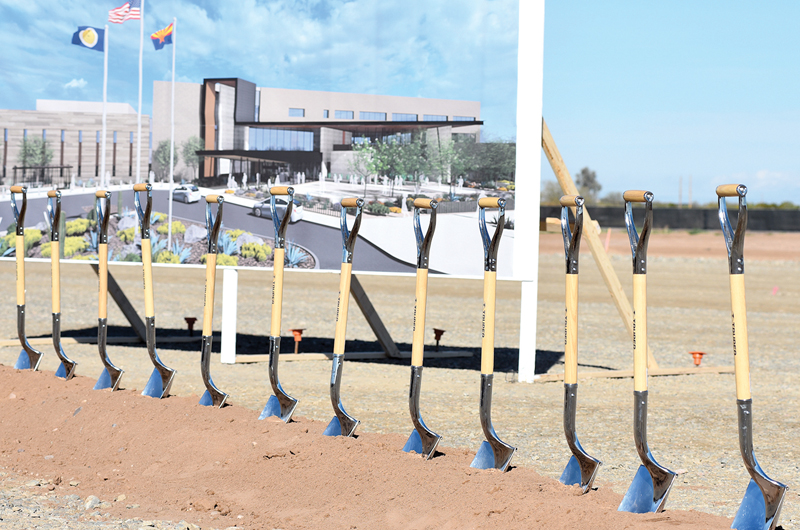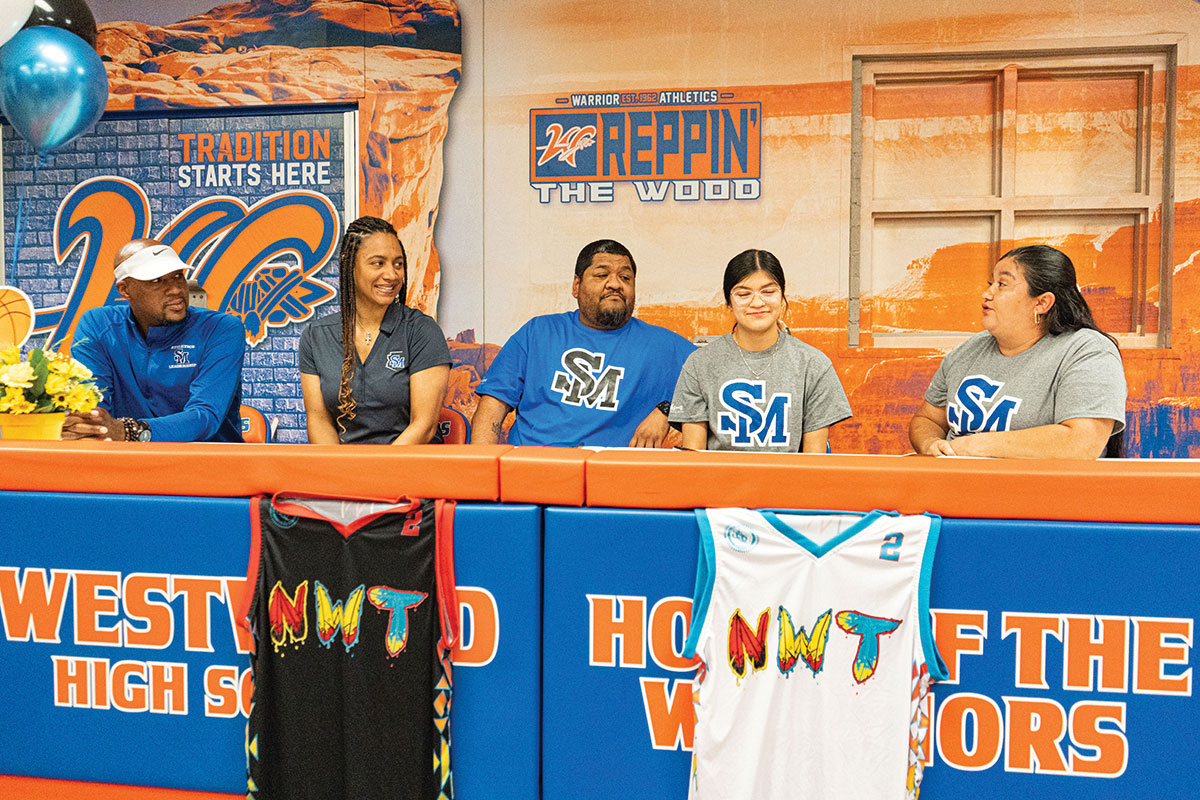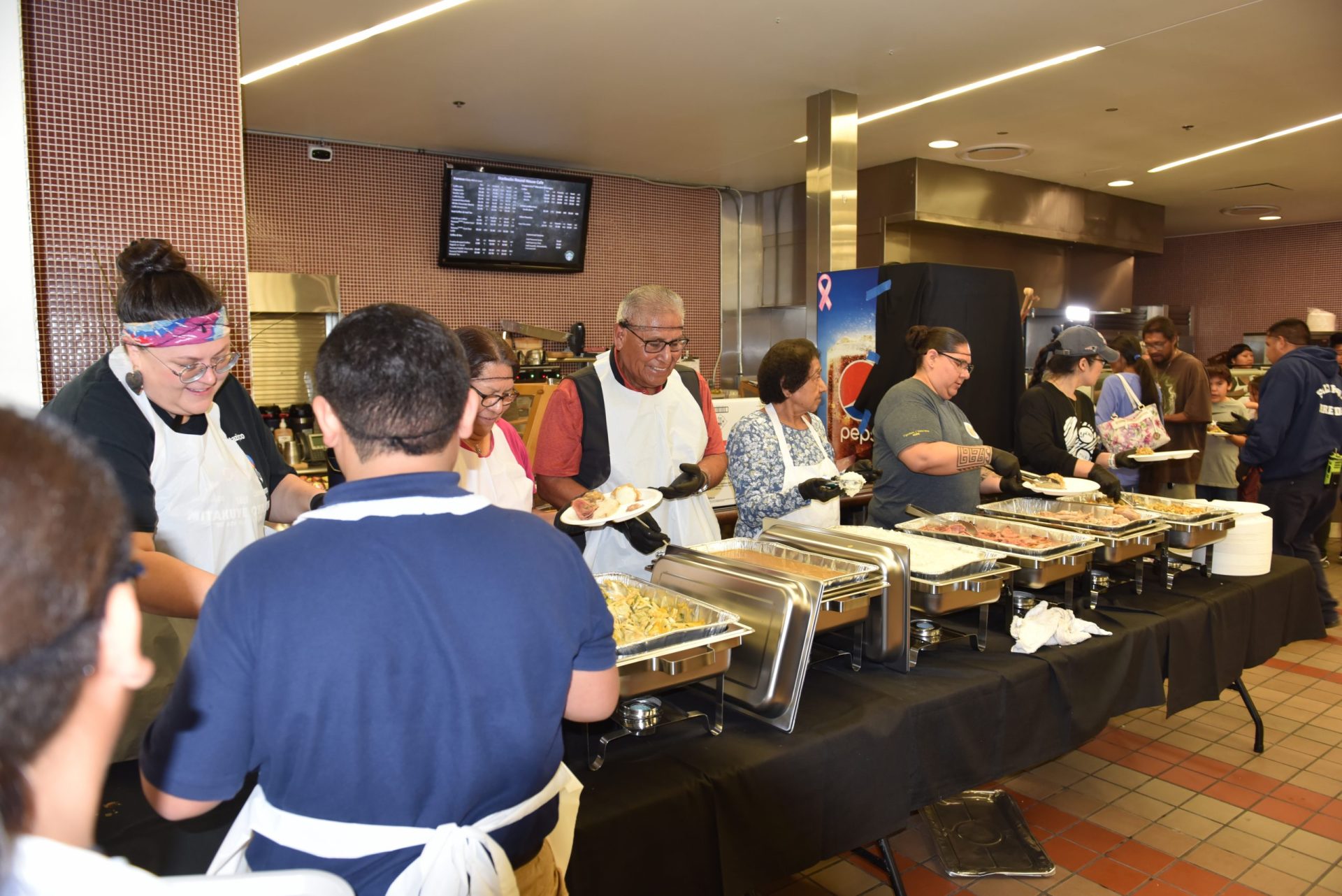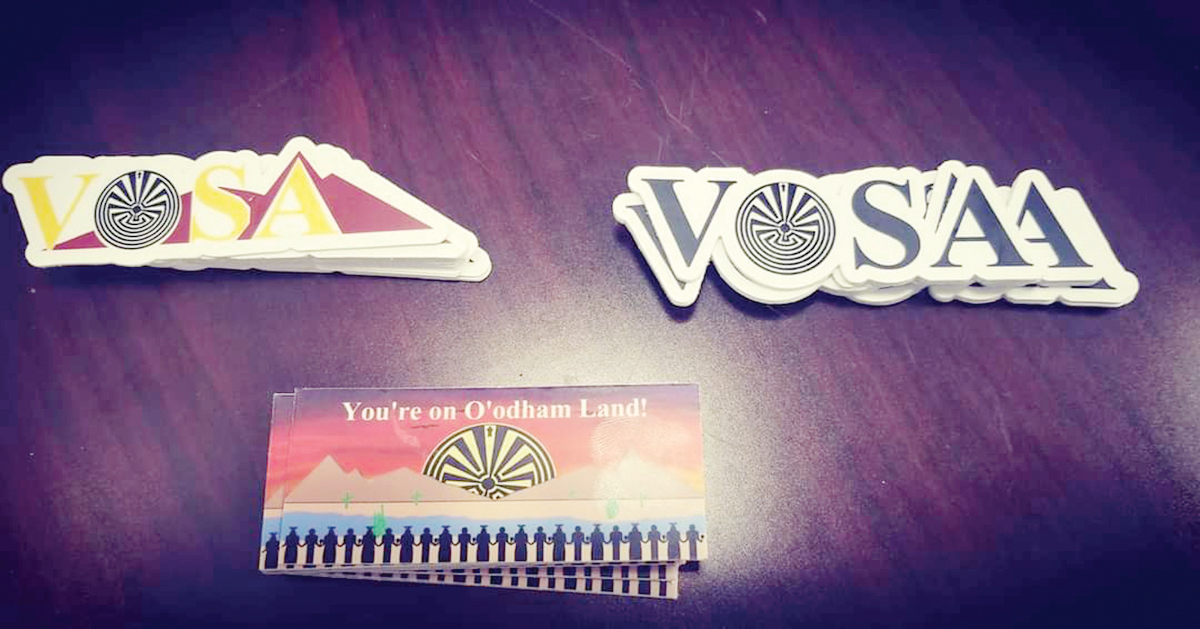VIEWS: 3128
February 11, 2020Northeast Ambulatory Care Center Groundbreaking

On Friday, January 17, Joseph Remitera, director of Salt River Pima-Maricopa Indian Community’s Department of Health and Human Services, welcomed SRPMIC President Martin Harvier; Vice-President Ricardo Leonard; Council representatives; Charles Ty Reidhead, M.D., director of the Phoenix Area Indian Health Service; as well as Community members, special guests and staff to the groundbreaking for the Northeast Ambulatory Care Center. The new facility is to be located at the southwest corner of Highway 87 (Beeline Highway) and McDowell Road.
“Thank you for coming out and celebrating this event, which has been about 20 years in the making,” said Remitera before calling upon Council representative Deanna Scabby to give the blessing.
Vice-President Leonard welcomed everyone and thanked the people involved in making this health care campus possible.
“We want to make this one of the best places where our [Community members] and other Native American people receive the best health care [available],” said Leonard.
“We want to make this one of the best places where our [Community members] and other Native American people receive the best health care [available],”
said Leonard
President Harvier talked about the importance of the new facility to the Community.
“I hope all of you felt the excitement of turning the ground over this morning to get started on this project. This an exciting day. It seems like it’s been a long journey; [we have been talking about] getting this ambulatory care center here in the Community for a long time,” said Harvier. “I remember back [when I was] vice-president, pleading for funds to build this [health care facility] and hoping that appropriations would be put in place. A lot of projects were on the list prior to this facility being built, so it was kind of ‘Wait your turn.’ I really appreciate over the years the relationship with PIMC (Phoenix Indian Medical Center) and the area IHS (Indian Health Services) office and all those involved in getting us here today.”
Harvier mentioned the health challenges that the Community faces, which include high rates of diabetes, heart disease and cancer. He said that having this new facility here in the Community would improve health care and help extend the lives of the Community members.
“[We] have been tracking the average age of death every five years; the latest numbers indicate average age at death for the [Community’s] male population is 47 years and for women it’s 55 years. The national average is close to 80 years, so that’s a 30-year difference,” said Harvier. “Having this facility is an opportunity to improve our health care … to extend our lives so we can be with our families [longer].”
Harvier also mentioned that the health care facility will be offering up to 500 new job opportunities for Community members. He said he’d encourage those who may be interested in health care as a career to start setting their academic goals now, so there will be a crop of Community members who can be employed at the health care facility when it opens in two years.
“I look forward to when we cut the ribbon. Our first patients will enter the doors in February 2022,” he said.
Architect Lyle Steely of SmithGroup, the Phoenix architectural design firm that is designing the facility, talked about the building and its design features that reflect the Community and culture of the O’odham and Piipaash people.
“A story that was told to us was how the healers would travel from peak to peak to learn how to heal for the Community, and the significance of the mountains to the Community—specifically Red Mountain—and that’s what really resonated with us. The decision was made to orient the building so that the approach to and departure from the facility would go toward Red Mountain,” said Steely. The building will be made of concrete, and the materials will be coming from Salt River Materials Group. Significant cultural symbols will be used throughout the facility.
Steely stated that the design work isn’t yet complete, and SmithGroup will continue to work with the Community advisory group and contractors as the project continues.
At the conclusion of the event, different groups of people took turns with shovels to turn the ground. The first group included the SRPMIC Council members, Health and Human Services staff and Indian Health Service staff. The second group included the architects and contractors, and the third group consisted of SRPMIC seniors.







